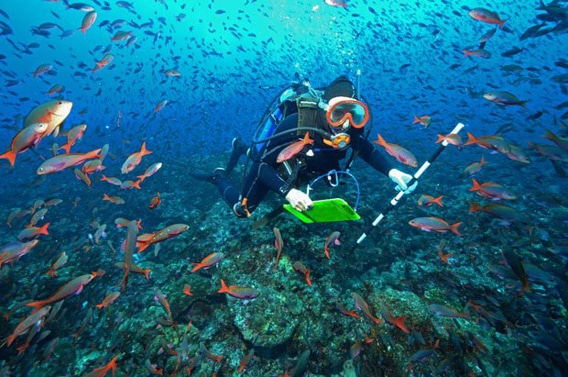Galapagos Corals May Predict the Future of Reefs Worldwide
(2012)
The Galapagos Islands have been famous for a century and a half, but even Charles Darwin thought the archipelago’s list of living wonders didn’t include coral reefs. It took until the 1970s before scientists realized the islands did in fact have coral, but in 1983, the year the first major report on Galapagos reef formation was published, they were almost obliterated by El Niño. This summer, a major coral survey found that some of the islands’ coral communities are showing promising signs of recovery. Their struggle to survive may tell us what is in store for the rest of the world, where almost three-quarters of corals are predicted to suffer long-term damage by 2030.
Galapagos Corals May Predict the Future of Reefs Worldwide
Mongabay
November 7, 2012
Julian Smith

The Galapagos are a tough place for coral to grow. Directly on the equator in the eastern Pacific, the islands sit at the intersection of five major ocean currents, both warm surface currents and cool, deep currents. The result is a marine climate that changes rapidly from island to island and season to season—not an ideal situation for organisms that are especially sensitive to changes in water temperature.
